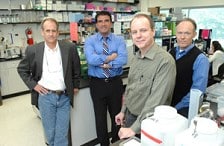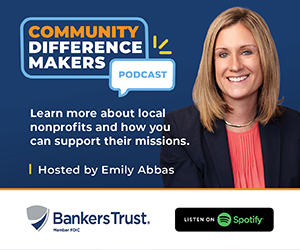It’s a pivotal year for NewLink Genetics Corp.

.floatimg-left-hort { float:left; } .floatimg-left-caption-hort { float:left; margin-bottom:10px; width:300px; margin-right:10px; clear:left;} .floatimg-left-vert { float:left; margin-top:10px; margin-right:15px; width:200px;} .floatimg-left-caption-vert { float:left; margin-right:10px; margin-bottom:10px; font-size: 12px; width:200px;} .floatimg-right-hort { float:right; margin-top:10px; margin-left:10px; margin-bottom:10px; width: 300px;} .floatimg-right-caption-hort { float:left; margin-right:10px; margin-bottom:10px; width: 300px; font-size: 12px; } .floatimg-right-vert { float:right; margin-top:10px; margin-left:10px; margin-bottom:10px; width: 200px;} .floatimg-right-caption-vert { float:left; margin-right:10px; margin-bottom:10px; width: 200px; font-size: 12px; } .floatimgright-sidebar { float:right; margin-top:10px; margin-left:10px; margin-bottom:10px; width: 200px; border-top-style: double; border-top-color: black; border-bottom-style: double; border-bottom-color: black;} .floatimgright-sidebar p { line-height: 115%; text-indent: 10px; } .floatimgright-sidebar h4 { font-variant:small-caps; } .pullquote { float:right; margin-top:10px; margin-left:10px; margin-bottom:10px; width: 150px; background: url(http://www.dmbusinessdaily.com/DAILY/editorial/extras/closequote.gif) no-repeat bottom right !important ; line-height: 150%; font-size: 125%; border-top: 1px solid; border-bottom: 1px solid;} .floatvidleft { float:left; margin-bottom:10px; width:325px; margin-right:10px; clear:left;} .floatvidright { float:right; margin-bottom:10px; width:325px; margin-right:10px; clear:left;}
It’s not difficult to find someone whose life has been touched by cancer. Those who haven’t endured the disease themselves likely have a close relative or friend who has died from it, is undergoing treatment or is a hopeful survivor.
Cancer’s profound impact on people’s lives may explain the passion that NewLink Genetics Corp.’s founders and investors have for bringing new pharmaceutical weapons against the disease to the marketplace.
“When we go out and tell our story (to potential investors), almost everyone has been touched by cancer through either their family or friends,” said Gordon Link, NewLink’s chief financial officer. “Some of them are more incentivized because they may have lost a friend to lung or pancreatic cancer.”
NewLink is positioned at the threshold of the emerging cancer vaccine market. Estimated at less than $500 million three years ago, that market is projected to grow to more than $8 billion in sales by 2012 as new drugs are approved for sale.
Increasing survival
Located in a 15,000-square-foot leased space at the Iowa State University Research Park, NewLink employs about 60 scientists and technicians. That number could quickly increase within the next two years as the levels of clinical trials advance, and then really take off a few years later as the company’s vaccines begin to enter the market.
The biopharmaceuticals company faces the challenge of navigating the years-long process of clinical trials and regulatory approval to bring its drug therapies to market, while at the same time working to raise capital to fund its growth.
Pancreatic cancer, the disease for which NewLink is the furthest along in developing a therapeutic vaccine, kills 95 percent of patients within five years of diagnosis.
“If we can develop a therapy that will increase that from 5 percent to 10 percent survival, we’re doubling the number of patients that can survive the disease,” Link said. However, because the approval process is slow, it will likely be another five years before NewLink’s first vaccine can be introduced into the market.
Incorporated 10 years ago, the Ames-based company has developed five cancer vaccines under its HyperAcute brand name that are now in various stages of clinical trials with patients at 23 major cancer research centers and hospitals throughout the country. It’s working simultaneously on a second approach that involves a so-called small-molecule drug that improves the immune system’s response to cancer, and could potentially be used in tandem with chemotherapy treatments to make them more effective.
The vaccines that NewLink and dozens of competing companies are developing are therapeutic or treatment vaccines, for use in patients who already have been diagnosed with cancer. The U.S. Food and Drug Administration (FDA) has yet to approve any therapeutic vaccines, but it has OK’d two preventive vaccines for cancer, one of which is now a standard vaccination against hepatitis B, which can lead to liver cancer. A second preventive vaccine, Gardasil, prevents human papillomavirus, which causes 70 percent of cervical cancers.
Late this year, NewLink will enter what are known as pivotal clinical trials for its HyperAcute vaccine for pancreatic cancer patients, and the company expects to begin that same stage of testing in mid-2010 for its lung cancer vaccine. The company also has earlier-stage phase 1 and phase 2 trials under way for vaccines that target breast cancer, malignant melanoma and prostate cancer.
Better defenses
Both the vaccine and small-molecule approaches the company is pursuing involve the science of immunotherapy – changing how the body’s immune defenses respond to cancer.
“We’re quite encouraged, based on our own data, as well as what we’re seeing in the field of immunotherapy,” said Dr. Nick Vahanian, NewLink’s chief medical and operations officer. “It’s given us more encouragement that immunotherapy-based drugs will play a significant role in the anti-cancer market.”
NewLink manufactures its vaccines by carefully selecting well-characterized cancer cell lines originally derived from the tumors of a patient, genetically modifying these cancer cell lines to make them more recognizable by the human immune system, growing many billions of the modified cells in a sterile environment and then after treating the cells so they no longer divide using them to treat hundreds of cancer patients. The vaccines work by stimulating the immune system into attacking tumor cells, which the body’s defenses typically ignore.
NewLink has identified a particular protein that stimulates a powerful immune reaction similar to what happens when an organ transplant patient’s body rejects the organ. The vaccine causes the cancer cells to produce that protein so that they become highly visible to the immune system.
These types of drugs have already been shown to provide better survival rates in patients with less toxic effects than chemotherapy, Vahanian said.
“So it’s a paradigm-shifting event, boosting the patient’s immune system and targeting the cancer with much less toxicity,” he said.
For its small-molecule drug, NewLink has secured an Investigational New Drug (IND) application from the FDA and has a co-development agreement with the National Cancer Institute (NCI), which has its own IND to conduct research into the small-molecule approach using NewLink’s intellectual property.
Several of the company’s principals have worked at the NCI during their careers, among them Vahanian and Dr. Charles Link Jr. (no relation to Gordon Link), who co-founded NewLink in 1999. Charles Link came to Des Moines in the early 1990s to assist in the start-up of the Human Gene Therapy Research Institute of the John Stoddard Cancer Center at Iowa Methodist Medical Center. It was there that he and several associates began researching the technology that would form the basis for NewLink’s vaccines.
As NewLink looked to expand its senior management group, it brought aboard two industry veterans: Gordon Link as CFO and Kenneth Lynn as executive vice president for business development. Prior to joining NewLink, Lynn worked with the Kauffman Foundation and Kansas Technology Enterprise Corp. on initiatives to advance bioscience-based businesses. He was a co-founder of Juvaris BioTherapeutics Inc., a California-based immunotherapy company.
Link came to NewLink a year ago; he previously served as CEO of Tapestry Pharmaceuticals Inc., a Boulder, Colo.-based company that he helped to take public in 1994. Prior to joining Tapestry in 1993, he was corporate controller of biotechnology company Synergen Inc.
Finding investors
Raising capital “is challenging for everybody,” Link said, “but in many ways it’s easier for a small biotech company to raise money today than it is in the public markets. Public offerings tend to be smaller (than private capital financing rounds), and companies have extremely small stock prices, so it’s expensive and dilutive to raise money that way. Small companies’ investors tend to be longer-term investors, and not quite as subject to the ups and downs of the marketplace.”
NewLink’s investors are primarily high-net-worth individuals in the Midwest, Link said. “The other route is traditional venture capital,” he said.
“There are a number of smaller venture capital firms in the Midwest, some of which are making smaller investments. But many have been forced to reserve capital for their existing investments, which is part of the reason we’ve stuck with our route of going to high-net-worth individuals.”
Among NewLink’s investors is Ames Seed Capital, an early-stage fund administered by the Ames Economic Development Commission (AEDC). The fund’s equity stake in NewLink is just under $200,000, which is at the fund’s upper threshold for an investment in a single company, said Ron Hallenbeck, the AEDC’s vice president of existing business and industry. “When you think about NewLink and the types of things they’re doing, you don’t always think of Ames,” he said. “This just happens to be a company that found the right niche here. We don’t have a lot of companies, obviously, in this (drug research) area.”
Five years ago, when NewLink was receiving multimillion-dollar offers from other states to move from Iowa, the company was awarded a $6 million grant from the Grow Iowa Values Fund with the understanding that NewLink would meet private fund-raising thresholds and create more than 300 high-paying jobs.
NewLink has raised about $22 million of a current $25 million round of fund raising, which includes approximately $4 million raised so far this year, Link said.
“We’ve been adequately capitalized since I’ve gotten here, and we’re raising additional capital so that we don’t have to slow down or to not hire critical employees,” he said. “We haven’t gotten in that situation since I’ve been here.
“NewLink is approached periodically about going public, and if that happens, we would need more administrative staff. So we could see significant growth in the next 18 to 24 months. It’s going to be subject to results of ongoing research and availability of capital.”
Link knows from experience how quickly the company may need to grow. While he was with Synergen, the company grew from 70 employees to 700 within three years.
In addition to the 23 cancer centers it’s currently working with, NewLink has about 20 other major medical centers, among them Iowa Methodist, that are at various stages of approval to begin clinical trials and that would be brought in as part of the pivotal trials.
“It’s a measure of the interest of the cancer doctors’ community that a number of major regional medical centers are interested in participating,” Link said. “Right now the flavor of the day is immunology and cancer vaccines, and NewLink is well positioned with what we believe may be the best cancer vaccine out there.”








